Our History
A Brief History of the Ukrainian Orthodox Church of Canada, 1918 - 2018
The seed of the Orthodox faith was sown on Canadian land, not my missionaries, but by simple peasants who came from Ukraine searching for a better life and established themselves on the Canadian prairies. It is indeed on this simple but, at the same time, deep faith of the Ukrainian peasants-pioneers that the Ukrainian Orthodox Church of Canada (UOCC) was established.
Most of the first Ukrainian settlers came to Canada from two regions in western Ukraine – from Halychyna (where they belonged to the Greek Catholic church) and from Bukovyna (where they belonged to the Greek Orthodox church). The Halychany, settling in Canada, were visited once in awhile by Greek Catholic priests. However, the Vatican wished to attach these new Canadians to the Roman Catholic church already in existence in Canada, thereby assimilating them. The Bukovinians arriving in North America usually incorporated themselves into the Russian Orthodox mission which was already in existence. Nevertheless, the Ukrainian immigrants desired to have a church with a Ukrainian character which would be closer to the spiritual and cultural needs of the Ukrainian people. This led to the formation of the UOCC.
Learn more
In July 2018, a confidential conference of disenchanted lay Greek Catholics from Manitoba, Saskatchewan and Alberta created a Ukrainian Orthodox Brotherhood whose goal was to organize the Ukrainian Greek Orthodox Church of Canada. Although the Ukrainian settlers who took part in the organization of this church body were not theologians, they were conscious of the canon law that a church body cannot exist without a bishop. Thus, the Brotherhood contacted Archbishop Alexander, an ethnic Ukrainian in the Russian Orthodox Mission in North America, who initially accepted to become the temporary bishop of the Ukrainian Greek Orthodox Church of Canada (UGOCC) and to preside at its first Sobor, but later refused. The first Sobor took place anyway on 28 December 1918 without the presence of a bishop and led to the establishment of the first seminary in Saskatoon. The second Sobor was held 27 November 1919, with the presence of the Antiochian Metropolitan Germanos who accepted to lead the UGOCC until such time that it elected its own bishop. He headed the UGOCC for five years, until 1924.
The new church was a distinct Canadian institution, unconnected to any church or patriarchate in Ukraine, Russia, Greece or Constantinople. It accepted the dogma, rites and practices of Eastern Orthodoxy. It also stressed that the church was to be conciliar in organization (sobornopravna) to the point of giving lay delegates a voice and a vote in administrative matters at the church's General Councils (Sobors) and on the Consistory, which is the main administrative body of the church. The Consistory consists of the church's Synod of Bishops, nine clergy and nine laity. The Metropolitan and his Synod of Bishops retain exclusive authority in all matters of Orthodox belief and practice.
In 1924, Archbishop John (Theodorovich) arrived in the USA from the Ukrainian Autocephalous Orthodox Church to lead the Ukrainian Orthodox Church in the USA. Knowing of the presence of a Ukrainian bishop on the North American continent, the fourth Sobor of the UGOCC, held 16-17 July 1924, decided to invite Archbishop John to become the ruling bishop of the UGOCC. He accepted and began visiting Canada in the summers. During his absence in winter, when he lived in the USA, his administrative functions were carried out by Rev. Semen Sawchuk, who was the priest-administrator, known as the Chair of the Presidium, at the Office of the Consistory.
With 14 priests, the UGOCC insisted on retaining its administrative autonomy under Rev. S. Sawchuk. The Ukrainian Self-Reliance League, formed in 1927, became an effective lay arm for the UOCC and boosted its material resources. By the end of 1928 the UGOCC had approximately 64,000 followers, organized in 152 communities served by 21 priests. It was the strongest in Saskatchewan (81 congregations in 1940), Alberta (55 congregations) and Manitoba (53 congregations). In 1946 the Church opened a theological school, St. Andrew's College, in Winnipeg.
Eventually, Archbishop John became the subject of polemics (the practice of engaging in controversial debate or dispute) regarding his non-canonical ordination to the rank of bishop. For this reason, he was forced to resign from his office as ruling bishop in 1946. In 1947, during an extraordinary Sobor, Bishop Mstyslav (Skrypnyk) was accepted as Archbishop of Winnipeg and all Canada. He was consecrated during the administration of the Warsaw Metropolinate on the freed Ukrainian lands in 1942. Due to some misunderstandings between him and the Consistory, Archbishop Mstyslav was forced to resign from his office in 1950 at the tenth Sobor. The Consistory then asked Metropolitan Polikarp (Sikorsky), who presided at the Holy Synod of the Ukrainian Orthodox Bishops, ordained by the administration of the Warsaw Metropolinate on the Ukrainian lands (and in the aftermath of World War II found themselves in the emigration), for assistance. He agreed then to look after the UGOCC.
In 1951, by the time an extraordinary Sobor was called, the Consistory had found four candidates for the office of a local ruling bishop. They were all canonically elected and ordained by the Holy Synod of the Warsaw Metropolinate (Autocephalous Orthodox Church of Poland). Of these candidates, three immigrated to Canada – Ilarian (Ohienko), the Metropolitan of Kholm and Pidliasha, who fled with his flock during the war and came to Canada in 1947 at the invitation of St. Mary the Protectress Cathedral in Winnipeg, Archbishop Michael (Khoroshy) who came to Canada in 1951 at the invitation of the Consistory, and Bishop Platon (Artemiuk) who came to Canada in 1951 with the blessing of Metropolitan Polikarp (Sikorsky) but who prematurely fell asleep in the Lord. The extraordinary Sobor decided to follow the canonical system of metropolia to administer the UGOCC thus creating a metropolia with three eparchies. Metropolitan Ilarion was chosen Metropolitan of Winnipeg and all Canada, and Archbishop Michael became Archbishop of Toronto and the Eastern Eparchy.
By 1951, the UGOCC had almost 300 congregations, 70 priests and some 11,000 members. This growing metropolia felt the need for new bishops. As a result, in 1959, Archmandrite Andrew (Metiuk) was ordained Bishop of Edmonton and the Western Eparchy, and in 1963, Archmandrite Boris (Yakovkevych) was ordained Bishop of Saskatoon and auxiliary of the Central Eparchy.
After 21 years of zealous archpastoral ministry, Metropolitan Ilarion fell asleep in the Lord on 29 March 1972. His passing was felt as a great loss for the UOCC. Archbishop Michael was chosen to replace him and he was Metropolitan until 1975 when he resigned from the office of the Primate. Then Archbishop Andrew became the Metropolitan of the UGOCC until his blessed repose on 2 February 1985. During Metropolitan Andrew's administration, new bishops were appointed – Bishop Nicholas (Debryn) in 1975, Bishop Wasyl (Fedak) in 1978, and Bishop John (Stinka) in 1983. After Metropolitan Andrew passed away in 1985, Bishop Wasyl was appointed Metropolitan. During his term in office, Archmandrite Yuriy (Kalistchuk) was appointed Bishop of Saskatoon in 1989.
Historically, the membership of the UOCC has been relatively stable, ranging from 20 percent to 25 percent of the total Ukrainian population in Canada. In 1989, the church's estimated membership was 128,000 in 290 congregations served by 99 clergy.
Fulfilling the wishes and intentions of the ever-memorable Metropolitan Ilarion, Metropolitan Wasyly, assisted by the Consistory, and with the help of God, concluded the canonical ordering of the UOCC. After a few visits and discussions with the Ecumenical Patriarchate, the UOCC was received into the Ecumenical Patriarchate in 1990, at the time of His Holiness, the Ecumenical Patriarch Dimitros, and thus normalized its relations with the other Orthodox churches. This made it a duly recognized member of the Orthodox family which consists of four autocephalous (self-governed) and autonomous churches, some also headed by patriarchs. The Primates of these churches manifest their unity by commemorating each other during the Liturgy and Divine Liturgy together on special solemn occasions.
According to the Patriarchal Decree, upon entering the Ecumenical Patriarchate, the UOCC remains a Metropolinate with full internal autonomy, having as its canonical head the Ecumenical Patriarch to whom it has canonical reference in all matters. This status recalls the days when the Kyivan Metropolinate was part of the Ecumenical Patriarchate and when the church relations between Constantinople and Kyiv were very close, for the good of these two important church centers.
The quintennial Councils or Sobors are the highest decision-making bodies of the UOCC. Executive duties are shared between the Council of Bishops and the Consistory based in Winnipeg, with elected clerical and lay representatives from each eparchy. The Ukrainian Self-Reliance League, with its component organizations, continues to play a significant role in church affairs at the local and national levels. In addition to St. Andrew's College and its Faculty of Theology, the church is affiliated with a number of student residences – the Mohyla Ukrainian Institute in Saskaton, St. John's Institute in Edmonton, and St. Volodymyr Institute in Toronto. The church's official publication since 1924 has been Visnyk (The Herald) newspaper.
The UOCC is an important religious element in Canada where Ukrainian culture and heritage are fused with the Orthodox Christian faith to form a living and vibrant tradition in Canada.
Based on information by Hierdeacon Job (Getcha) and Dr. Oleh Gerus, and on Consistory records.
Note: In 2017, there were 249 Ukrainian Orthodox parishes in Canada: 10 in British Columbia 10, 71 in Alberta, 79 in Saskatchewan, 62 in Manitoba, 24 in Ontario, and 3 in Quebec (there are no parishes in the Atlantic provinces, Yukon Territory, Nunavut or Northwest Territories). Of these parishes, 126 are rural parishes, where one priest serves many parishes.
Founders and Pioneers
The Assumption of the Blessed Virgin Ukrainian Orthodox Cathedral honours its founders and pioneers who through their tireless efforts and sacrifice established the Parish in 1949 and continued to support it over many years. The current and future members of this Parish remain forever indebted to the vision and initiative of these founders and pioneers and to other parishioners who provided support in spirit and through their individual efforts.
Learn more
- MOSKALUK, George
- MOSKALUK, John & Gladys
- MOSKALUK, Metro & Mrs.
- MOSICHUK, Katherine
- MUSHKA, Volodymyr & Iryna
- NARKEVICH, Volodymyr & Nina
- NATCHUK, Nick & Margaret
- PETROWSKY, Michael & Ivanna
- PRYHORNYTZKY, Mr. & Mrs.
- ROMANIUK, George
- ROMANIW, Oleksa & Maria
- ROMANUK, Mike & Catherine
- SAWCZENKO, Ignacy & Walentyna
- SHANDRO, Irene
- SKRYPNYK, Mr. & Mrs. J.
- SOTNYK, Victor & Alla
- STEFIUK, Alex & Janet
- STRILETZKY, Wasyl & Mrs.
- SURMACH, Anna
- SYDOR, Vasyl & Anna
- SZTEPA, Mykola & Tatiana
- TERTISHNIK, Oleksij & Maria
- TOKARYK, John
- TSEBRYK, Petro
- TYLYHUZ, George & Dora
- TYTOR, Mykhailo
- TUSKY, William
- WISHEWAN, William & Mary*
- ZEBRUKA, Peter
- ZELEM, Pavlo & Halyna
- ZIDICHOUSKI, Anthony & Raifta
- ZOPPA, Volodomyr & Mary
- Vladyka MSTYSLAW
- Very Reverend Protopresbyter Volodymyr
- SLUZAR
- BOHATYRETZ, Orest & Sylvia
- BRIDAL, Stephen & Mary
- CHINKIWSKY, Mykhailo & Angelica
- CHINKIWSKY, William & Kathleen
- CHOMYN, Michael & Dorothy (Chomane)
- COSTASCHUK, Dmitur
- DACOUR, John & Mary
- DANCHUL, Eugene & Lena
- DARCOVICH, William & Helen
- DANYLUK, Fr. Ivan
- DOROFI, Nicholas & Pauline
- DOVHUN, Mr. C.
- FOCHUK, George
- HADINKA, Alexander & Nelly
- HLADUN, C.
- HLEWKA, George
- KMITH, Dimitro & Rita
- KOMENDAT, Nick
- KOMISARCHUK, William
- KOSTENUK, Dmitri
- KROKOSH, Harry & Pearl
- KRUSHNISKY, George & Eustena
- KRYWORUCHKO, Anatoly
- KUBARSKY Ivan
- KUBISHEWSKY, Peter & Alice
- LACOSTA, Peter
- LACOSTA, William & Mary
- LASCHUK, Pavlo & Kateryna
- LAZAROWICH, Anton & Matilda
- LEWISKI, Evhen & Catharina
- MELENKA, Stephan
- MACK, Alex & Mary
- MARCHENKO, Mr. S.
- MAYSTRENKO, Gregory & Ludmila
- MONUK, Mr. & Mrs.
Parish Priests
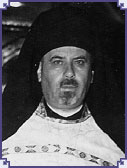
Fr. John Danyliuk
1950 – 1952
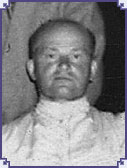
Fr. Orest Iwaniuk
1952 – 1954
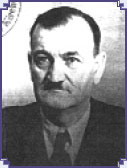
Fr. Gregory Kryshtanowych
1954 – 1955
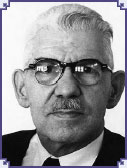
Fr. Myroslav Podolsky
1955 – 1961
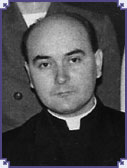
Fr. Bohdan Gorgitza
1961-1964
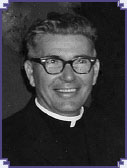
Fr. Vasyl Senyshyn
1964 – 1975
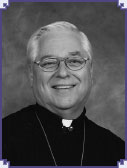
Fr. Nicholas Rauliuk
1975 – 1979
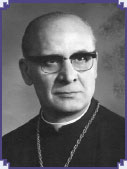
Fr. Serhiy Kitsiuk
1979 – 1980
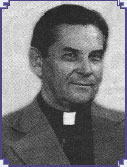
Fr. Paul Shadursky
1980 – 1981
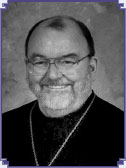
Fr. Roman Bozyk
1981 – 1992
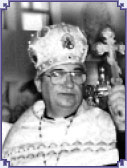
Fr. Peter Kosatsky
1992 – 1993
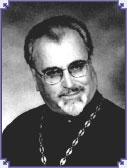
Fr. Peter Boyko
1993
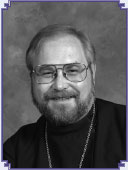
Fr. Roman Kocur
1993 - 1994
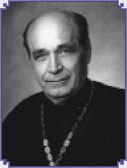
Fr. Gregory Udod
1994 - 1995
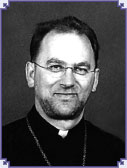
Fr. Jaroslaw Buciora
1995 – 1999
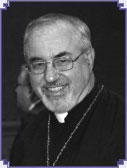
Fr. Ihor Kutash
1999 – 2000
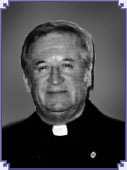
Fr. Mykola Churak
2000 – 2002
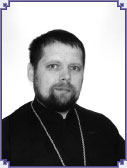
Fr. Ihor Okhrimtchouk
2002 – 2021
Historical Milestones
| February 1949 | Initial meeting of 13 founders of the church who made the decision to organize a Ukrainian Orthodox Parish in Canada’s capital. |
| August 1949 | Meeting of earliest members in the presence of Very Rev. Volodymyr Sluzar of Montreal. Decision made to join the Ukrainian Orthodox Church of Canada. Dmytro Kostenuk elected as first Parish President. |
| October 1949 | First Liturgy of the congregation held in the Greek Orthodox Church, located at 360 Albert St., attended by Archbishop Mstyslav, Primate of the Ukrainian Orthodox Church of Canada. |
| March 1950 | Congregation purchases first church building, the Anglican Church of the Ascension, dating from 1877, at 115 Echo Drive, on the corner of Main Street, overlooking historic Rideau Canal . Cost of the church - $12,000. The cost of modifications was an additional $7,000 and included a central roof dome, a bell tower and a bell imported from Europe. |
| August 1950 | Dedication of the first Ukrainian Orthodox c hurch in Ottawa, named in honour of the Assumption of the Blessed Virgin. |
| 1951 | Purchase of parish cemetery at 1890 Merivale Road. |
| 1952 | First Ukrainian school committee formed within the parish and classes start at Cambridge School. |
| February 1960 | Establishment of the Ukrainian Women’s Association of Canada (UWAC), Lesia Ukrainka Branch. |
| March 1962 | Decision made by parish to purchase land at 1000 Byron Avenue for $40,000. The property included the historic Honeywell House, which became the rectory and place of worship during the period of the construction of the auditorium. |
| April 1962 | Yuri Kodak selected as chair of Building Committee, with Vasyl Tomashewsky as the architect responsible for church buildings. A two-phase plan is adopted to first build the auditorium, then the actual church. |
| September 1962 | First meeting of CYMK – Canadian Ukrainian Youth Association – held in Ottawa. |
| October 1963 | Architect Vasyl Tomashevsky completes plans for the auditorium. |
| November 1963 | Sod-turning ceremony marking the start of the construction of the auditorium, in presence of Rev. Bohdan Gorgitza, Very Rev. Myroslav Podolsky and Ottawa Mayor Charlotte Whitton. |
| February 1964 | First issue of parish newsletter “Visti” issued. |
| May 1964 | Dedication of the church auditorium which becomes the place of worship for the next 12 years. In attendance - Archbishop Mikhail. |
| December 1966 | Parish approves Church Statute. |
| 1968-1975 | Plans for Church drawn up successively by Vasyl Tomashevsky (1968), P. Dovbush (1973), and Yuri Kodak (1975). Over the years, Church Building Committee chairs included Nick Tokaryk and Alexander Wloch. |
| March 1973 | Church Building Committee makes three recommendations: 1/ that the church not be built directly above the auditorium, 2/ that the church should accommodate 150 people, and 3/ that the cost for building the church not exceed $200,000. |
| 1973 | Dedication of the cross at the parish cemetery on Merivale Road, donated by Eugene and Olga Danchul. |
| October 1975 | Building committee authorizes architect Yuri Kodak to create plans to determine cost estimates for the building of the church. |
| March 1976 | Yuri Kodak’s plans for the church building are accepted by the parish. |
| September 1977 | Start of construction of church at 1000 Byron using Yuri Kodak’s plans and Peter Vorobej as contractor. |
| September 1978 | Dedication of new Ukrainian Orthodox Cathedral of the Assumption of the Blessed Virgin. Metropolitan Andrij in attendance. |
| 1980 | Vasyl Tomashevsky designs, commisions and funds the two sets of church banners (khoruhvy), one pair gold plated and the other pair burgundy gold embossed. |
| 1983 | “Burning” of the church mortgage. |
| June 1988 | Iconostas from St. Sophie Ukrainian Orthodox Cathedral (Montreal) installed in church, replacing the original iconostas built by Dmytro Kostenuk. |
| September 1991 | Blessing of stained glass window icon depicting the Virgin Mary, donated by Olga Danchul in memory of her late husband, Eugene Danchul, to honour the founders of the parish. |
| 1996 | As a result of declining enrolment, Ukrainian School merges with that of the parish of St. John the Baptist Shrine. |
| Later in 1990s | Iconographer and one-time head of UWAC Ottawa branch, Vera Senchuk, commissioned by the parish to paint new icons to replace the original ones on the St. Sophie iconostas. |
| January 1999 | First community Sviat Vechir (traditional Ukrainian Christmas Eve dinner) held in the church auditorium. |
| October 2002 | Church Choir participates in the Multi-Faith Thanksgiving Service on Parliament Hill, celebrating the 50th year of the reign of Her Majesty Queen Elizabeth II. In attendance were Her Majesty Queen Elizabeth II, H.R.H. Prince Philip, Governor General Adrienne Clarkson and Prime Minister Jean Chretien. |
| September 2004 | Assumption of the Blessed Virgin Ukrainian Orthodox Cathedral honours its founders and pioneers as it celebrates its 55th Anniversary and annual Feast Day. His Eminence Yurij, Archbishop of Toronto and the Eastern Eparchy, presides at the Hierarchical Divine Liturgy. |
| 2005 | A commemorative plaque with names of the Founders and Pioneers of the parish is hung in the vestibule near the main church entrance. |
| October 2009 | Celebration of the 60th Anniversary of the Assumption of the Blessed Virgin Ukrainian Orthodox Cathedral in Ottawa. |
| May 2022 | Visit by Their Royal Highnesses The Prince of Wales and The Duchess of Cornwall as part of the Royal Tour to mark the celebration of the Platinum Jubilee of Her Majesty Queen Elizabeth II. Learn more |